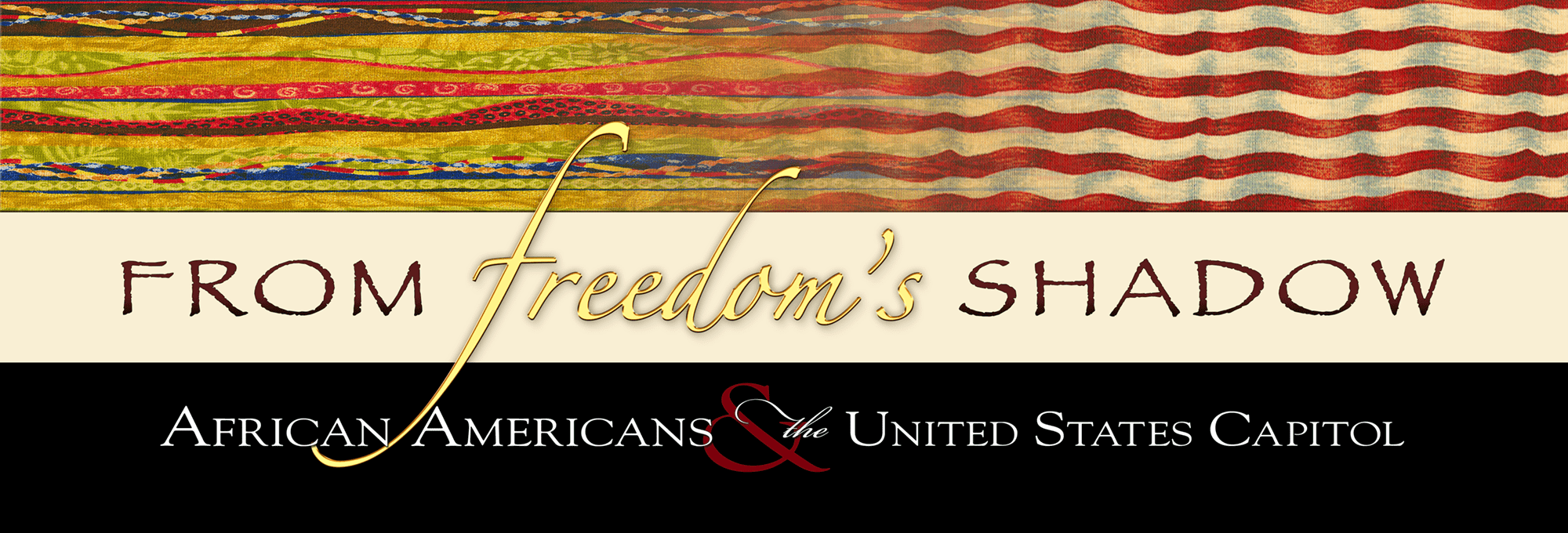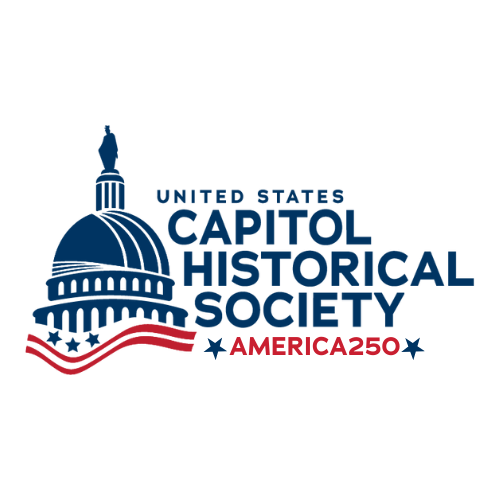
Introduction
For too long, African Americans struggled in the shadows of America. As slaves, as sharecroppers, as the victims of Jim Crow, our ancestors lived in this great nation, but we were never quite part of it.
— Congressman John Lewis (November 18, 2003)
Freedom for some meant slavery for others. The cruel irony of this nation’s founding and its “Temple of Liberty”—the U.S. Capitol—is that both were made possible by the enslavement of African Americans.
The labor of enslaved and free blacks helped build the Capitol. An enslaved African American man helped to cast the Statue of Freedom, which was placed atop the Dome during the Civil War.
Since the end of the Civil War, African Americans have struggled to move out of the shadows and into the Temple of Liberty as full participants.
This the online version of a traveling exhibit by the U.S. Capitol Historical Society that depicts the journey of African Americans from slavery to freedom and political representation in the U.S. Capitol. The exhibit opened February 2006 in Baltimore, Maryland at the Reginald F. Lewis Museum of Maryland African American History and Culture.
LOCATION: Benjamin Banneker & the Capitol’s Contested Meaning
“[T]he first temple dedicated to the sovereignty of the people.”
— Thomas Jefferson, 1812
African Americans have been part of the Capitol’s history from the time Benjamin Banneker, the son of a former slave, joined the team led by Andrew Ellicott to survey the new federal district in 1791. The area, which the city commissioners named “The City of Washington in the District of Columbia,” was composed of farms, plantations, a few villages, the small tobacco port of Georgetown, Maryland, and the larger port of Alexandria, Virginia.
The survey enabled Peter L’Enfant, the man chosen to design the city, to map the streets and select the sites for the major government buildings. For the Capitol’s location, L’Enfant chose the area’s highest elevation. Founding Fathers George Washington and Thomas Jefferson believed that just as the Constitution was written to “secure the Blessings of Liberty,” the Capitol would be a “temple dedicated to the sovereignty of the people.”
Benjamin Banneker understood the inequity of a Temple of Liberty in a land of slavery. In a 1791 letter to Jefferson, he asked the author of the Declaration of Independence how he could believe that “all men are created equal” when he and other Founding Fathers enslaved “by fraud and violence so numerous a part of my brethren, under groaning captivity and cruel oppression.”








